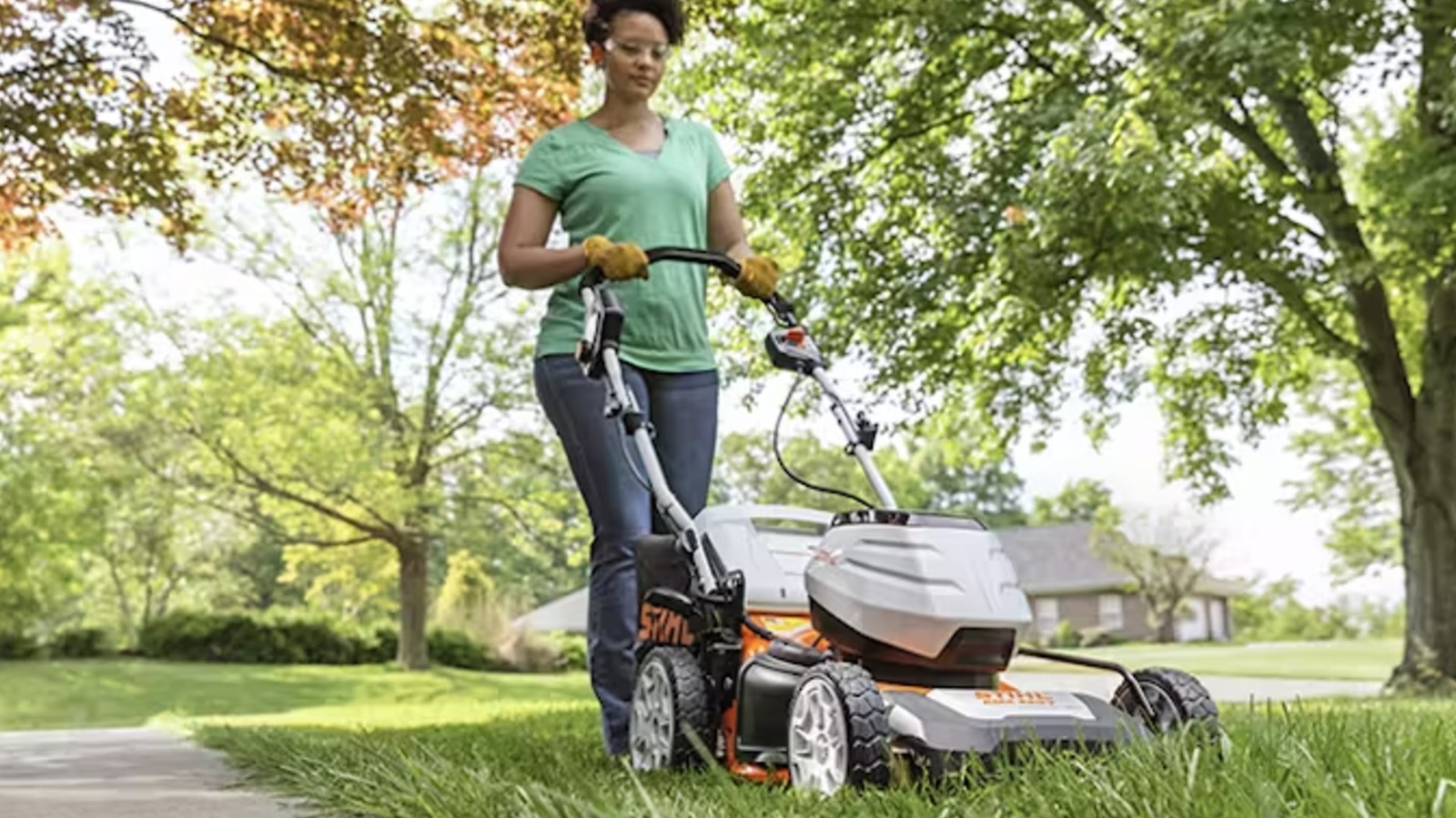
We may receive a commission on purchases made from links.
Rechargeable batteries aren’t just for handheld power tools from hardware brands like Ryobi or Milwaukee. Even larger tools, such as those you’d use for backyard upkeep, like hedge trimmers, leaf blowers, and even powerful electric lawn mowers, can be powered by batteries, where they were previously powered only by gas. Hardware brand Stihl has made this practice its bread and butter, powering both hefty implements and small but powerful mini tools with its hefty AK and AP lithium-ion battery packs.
Stihl isn’t the only hardware brand that uses larger batteries for larger tools; both Ryobi and Milwaukee offer their own battery-powered lawn care tools like lawn mowers as well, also powered by their own proprietary battery packs. Considering the size and power of these kinds of tools and accessories, it goes without saying that none of them are particularly cheap. Would it be possible to cheat the system, then, by using a Stihl battery to power a Ryobi or Milwaukee lawn mower? Unfortunately, due to the unique shape and technology of Stihl’s batteries, the answer is no, and unlike with other battery-powered tools, you can’t even turn to third-party battery adapters to fix this problem.
Stihl batteries’ shape and technology prevents them from being used with other brands
Like most hardware brands that dabble in rechargeable batteries, Stihl’s battery packs use wholly original designs and technology. In fact, Stihl itself actually maintains several different battery systems, including AP, AK, and AR. The only point of crossover here is that you can use AR batteries in AP tools; otherwise, these systems cannot interface with each other at all.
On the larger scale, the unique shapes and means of interfacing with connected tools employed by Stihl batteries unfortunately preclude them from connecting to any other system made by any other hardware brand. If you take a look at a Stihl AP 300 S battery pack and compare that to a Ryobi battery of comparable size and power, such as the 40V 8Ah battery from Ryobi’s EDGE technology line, you can see the obvious physical differences between them. The Stihl battery has two large notches in its top, allowing it to slide into a compatible tool’s battery compartment. The Ryobi battery, meanwhile, has two connecting rails on the bottom designed to slide in and hook onto the battery connector on a compatible tool. These physical distinctions mean it is simply impossible to connect a Stihl battery to a Ryobi tool or vice versa.
Even if you could insert a Stihl battery into a different brand’s tool, every hardware battery pack is equipped with its own proprietary battery management system made up of unique sensors and support devices. These sensors are only programmed to recognize a compatible connection from a tool in the same family. If it were somehow connected to a tool outside that family, it wouldn’t recognize it, and it would not deliver energy.
There are no adapters available to convert Stihl batteries to other tools
Normally, if you wanted to use a particular brand’s batteries with another brand’s tools, the common tactic would be to resort to a third-party battery adapter. This is generally not the best idea, however, as using third-party adapters will sever the elaborate means of communication between the battery and the tool and force it to provide unregulated electricity. This could result in underpowered performance from the tool, or worse, an overload that completely burns out both the tool’s motor and the battery itself.
In the specific case of Stihl batteries, however, third-party battery adapters are not an option. Compared to the various adapters available for use with hand tools from brands like DeWalt or Makita, there are no specific battery adapters available that make Stihl batteries compatible with any other brand. The only thing even close to a battery adapter available on Amazon is a generic adapter for a Stihl AP 300 battery pack. Unlike other adapters, which feature compatible connectors on both sides for their respective batteries and tools, this adapter is merely connected to a pair of wires for outputting power directly from the battery to whatever you attach them to. If you wanted to use this with another brand’s tools, it would be both an obnoxiously elaborate project and likely even more unsafe than a normal third-party battery adapter.
